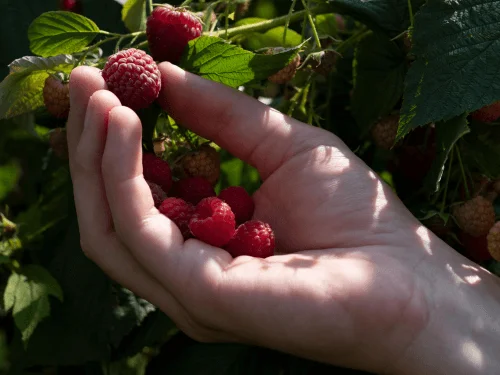10 Best Indoor Hanging Plants for Every Plant Lover
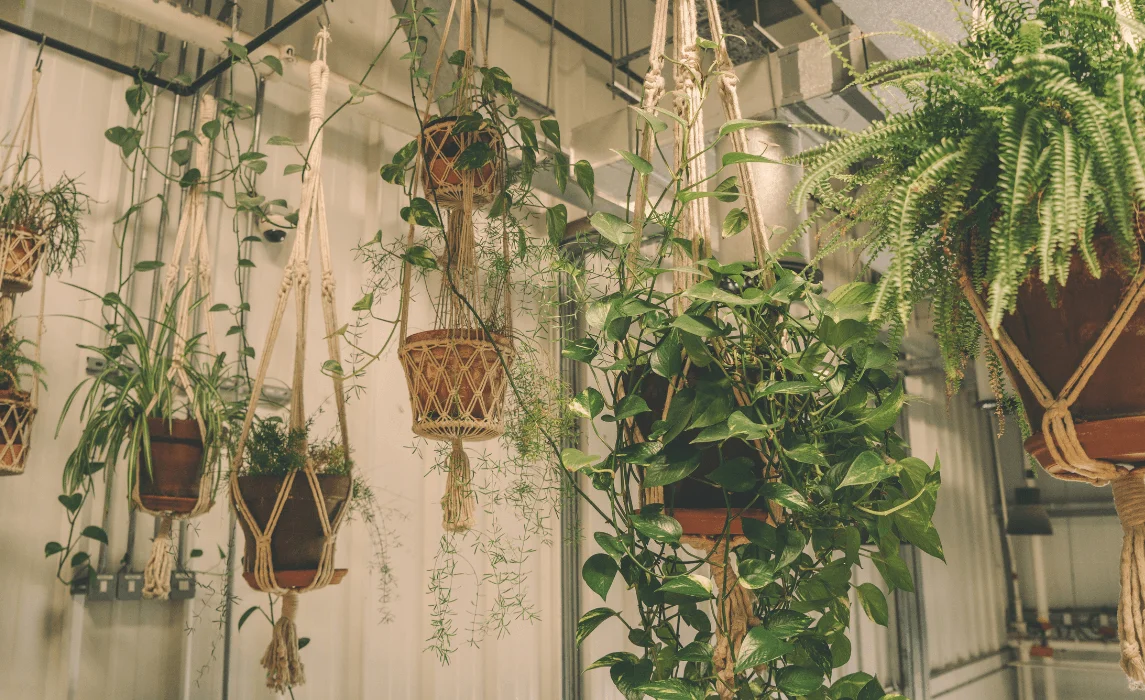
1. Can I grow fruit trees in small gardens or pots?
Yes! Many dwarf fruit trees and container-friendly varieties are perfect for small gardens or patios. Trees in pots can include citrus trees, figs, and dwarf apple trees. Using containers allows you to control soil, water, and temperature more easily, making it possible to grow fruit even in northern climates. These trees are especially useful if you want fast-growing trees that produce fruit within a few years and don’t require a large orchard space.
2. What climate is best for fruit trees?
The climate plays a major role in fruit production. Cold-hardy trees like apples, pears, and plums survive in northern regions, including zone 3, while citrus trees, figs, and peaches thrive in warmer southern areas like Florida or Virginia. Some fruit trees may require protection from frost, while others can tolerate cold winters. Understanding your USDA zone and local conditions ensures your trees will grow healthy and produce fresh fruit consistently.
3. Where can I buy fruit trees online?
Many growers offer fruit trees for sale online, including bare root trees, grafted trees, and container-grown trees. Buying fruit trees online allows you to select from a wide range of fruit tree varieties suitable for your climate, including apples, pears, peaches, plums, citrus trees, and more. When purchasing, check for USDA zone compatibility, tree size, and health guarantees to ensure you receive a quality tree that will thrive in your garden.
1. What is the best way to grow raspberries?
Raspberries grow best when planted in a sunny garden with well-draining soil. You can start by planting bare-root or potted plants in early spring or late fall. Rows of raspberries should be spaced about 2 to 3 feet apart within a row and 8 feet between rows. Using a trellis or support system helps canes grow upright and promotes healthy berry production.
2. How do I plant raspberries?
When planting raspberries, place the crown of the plant 1 or 2 inches above the ground. For bare-root plants, spread the roots in a hole and cover gently with soil. For potted plants, plant at the same depth as they were in the container. Make sure each bush has space to spread so new shoots and suckers can grow without overcrowding. Raspberries are easy to grow, but giving them proper spacing and sunlight ensures your raspberry patch thrives.
3. When do raspberries grow fruit?
Raspberries are perennials, and the first year canes mostly focus on root and cane growth. Summer raspberries (summer-bearing) produce fruit on two-year-old canes, typically in early summer. Fall-bearing raspberries (everbearing) can produce a crop in the fall of the first year, and another in the following summer from the same primocanes. With proper care, a bush can produce fruit in both summer and fall, giving you fresh raspberries for pies, tarts, or eating straight from the garden.
1. Are black-eyed Susans perennials or annuals?
Rudbeckia hirta, the traditional black-eyed Susan, is a biennial or short-lived perennial that often acts like an annual due to self-seeding. Some cultivars like Rudbeckia fulgida are true perennials that return every year.
2. When do black-eyed Susans bloom?
They typically bloom from early summer to early fall, filling your garden with bright yellow petals and dark black eyes. Regular deadheading encourages continuous flowering throughout the season.
3. How do I plant black-eyed Susan seeds?
Scatter Rudbeckia hirta seeds directly on the soil surface and press them lightly, as they need light to germinate. Keep the soil moist, and seedlings will appear within 7–21 days.
4. Can I grow black-eyed Susans indoors or in containers?
Yes. You can grow black-eyed Susans in containers indoors or outdoors. Use a regular seed starting mix, ensure proper drainage, and place them in a sunny location for maximum blooms.
If you’re looking to add a touch of greenery to your home without taking up precious floor space, indoor hanging plants are the perfect solution. These versatile beauties not only bring life and color to any room but also purify the air and create a calming, nature-inspired atmosphere. Whether you’re decorating a cozy apartment, brightening up a home office, or turning your living room into a lush indoor garden, hanging baskets make it easy to display your favorite plants in style.
In this guide, we’ve rounded up the 10 best indoor hanging plants and hanging baskets that every plant lover should have. From low-maintenance trailing vines to tropical showstoppers that thrive in bright light, each option adds its own unique charm and personality to your space. Get ready to elevate your home décor—literally—with these stunning hanging plant ideas that blend beauty, practicality, and natural flair.

10 Best Indoor Hanging Plants
1. Golden Pothos (Epipremnum aureum)
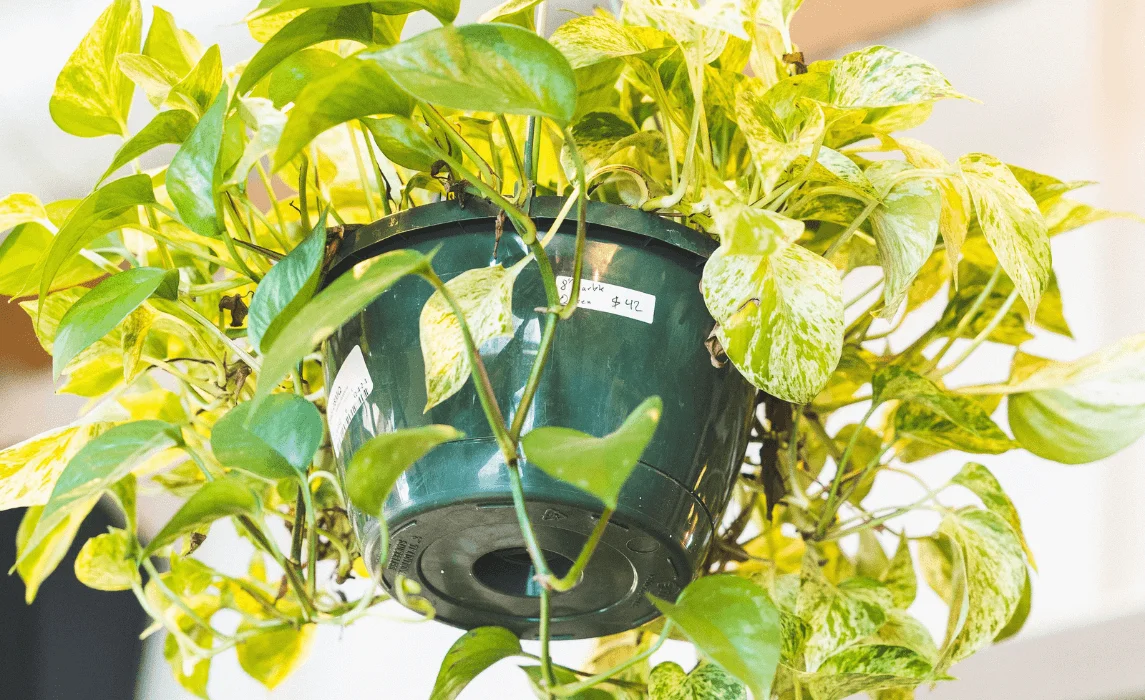
The Golden Pothos, often called the “Devil’s Ivy,” is one of the most resilient and best hanging plants for beginners. Native to the Solomon Islands, this tropical vine is famous for its heart-shaped leaves splashed with golden-yellow variegation. Its long, trailing stems can reach over six feet, creating a graceful cascade that makes any corner look lush and alive. Golden Pothos thrives in bright, indirect light but can easily adapt to low-light conditions, making it ideal for apartments or offices. It’s forgiving when it comes to watering — just let the top layer of soil dry out before the next watering. This plant naturally filters air pollutants, adding both beauty and health benefits to indoor spaces. It’s perfect for beginners or busy plant owners, as it can tolerate missed waterings and irregular feeding schedules without losing its shine.
Soil: Well-draining mix with peat and perlite
Water: Let topsoil dry before watering again
Light: Bright, indirect to low light
Humidity: Moderate
Fertilizer: Monthly during growing season
Temperature: 60–85°F (16–29°C)
USDA Zone: 10–12
2. Spider Plant (Chlorophytum comosum)
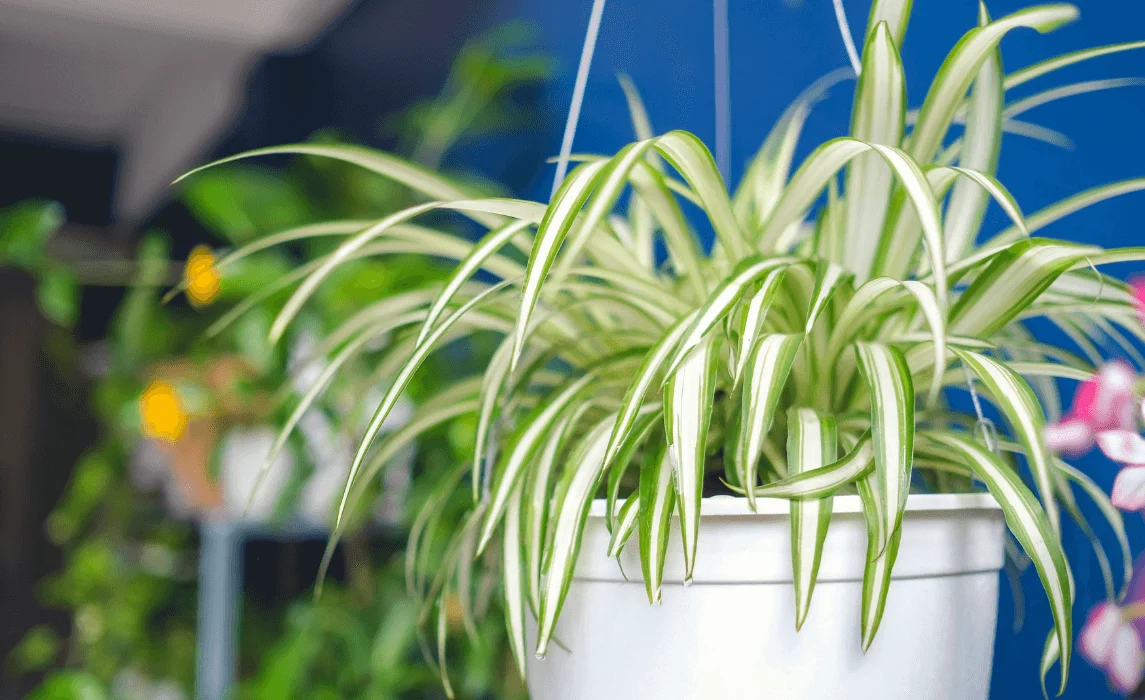
Few plants can match the cheerful appeal and hardiness of the Spider Plant, a top choice among indoor hanging plants. Native to tropical regions of Africa, this species produces long, arching leaves striped with white or yellow, giving it a fresh, modern look. As the plant matures, it sends out long stems bearing tiny white flowers and baby plantlets—known as “spiderettes”—that dangle elegantly like a living chandelier. Spider Plants thrive in bright, indirect light and can handle moderate humidity. They’re also incredibly forgiving when it comes to watering, making them ideal for beginners. This low-maintenance hanging houseplant looks wonderful in kitchens, bedrooms, or living rooms and is non-toxic to pets—perfect for families, pet owners, and new gardeners alike.
Soil: Loose, well-draining mix with compost
Water: Water when top inch of soil feels dry
Light: Bright, indirect to moderate light
Humidity: Average indoor humidity
Fertilizer: Every 2–4 weeks in growing season
Temperature: 65–80°F (18–27°C)
USDA Zone: 9–11
3. English Ivy (Hedera helix)
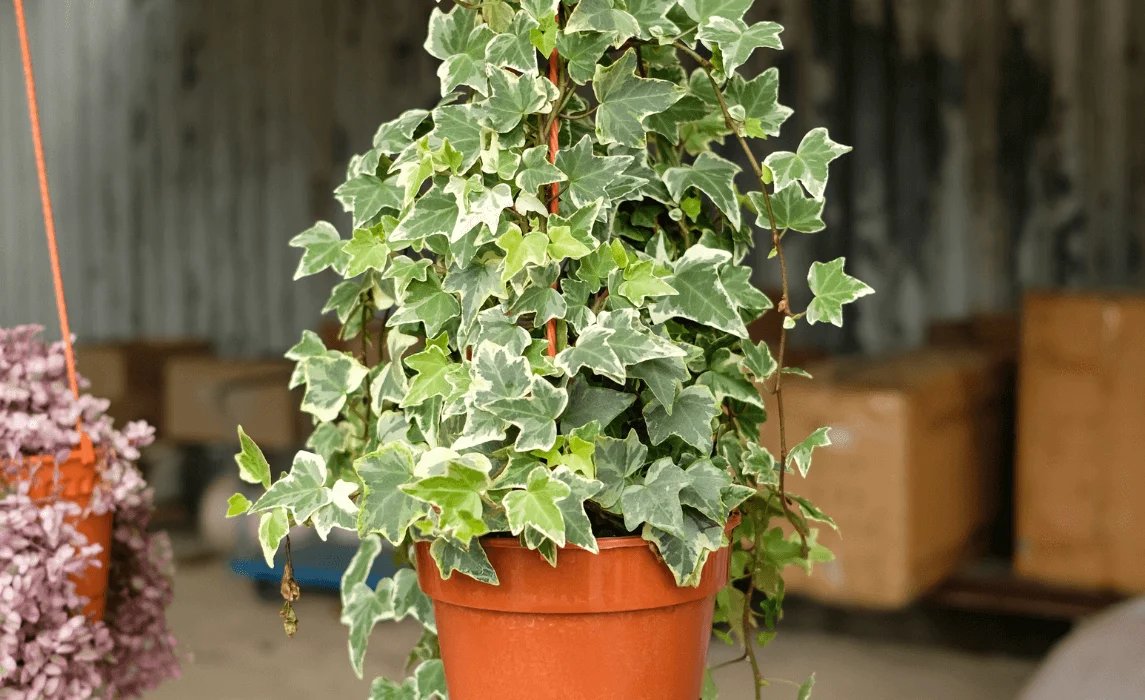
With its elegant trailing vines and lush green leaves, English Ivy is one of the most classic and charming hanging plants to grace any indoor space. Native to Europe and Western Asia, it’s admired for its glossy, lobed leaves that come in various shades of green and creamy white. English Ivy is a vigorous grower that can be trained to climb or drape beautifully from hanging baskets and shelves. It prefers bright, indirect light and thrives in cooler rooms with moderate to high humidity. English Ivy is also an excellent air purifier, removing toxins such as benzene and formaldehyde from indoor air. While it appreciates consistent watering, it dislikes soggy soil. This plant is best suited for intermediate gardeners who enjoy pruning and shaping plants, as trimming helps maintain a full, bushy appearance.
Soil: Moist, well-draining potting mix
Water: Keep soil evenly moist, not waterlogged
Light: Bright, filtered light
Humidity: Moderate to high
Fertilizer: Every 4–6 weeks during active growth
Temperature: 50–75°F (10–24°C)
USDA Zone: 4–9
4. Boston Fern (Nephrolepis exaltata)
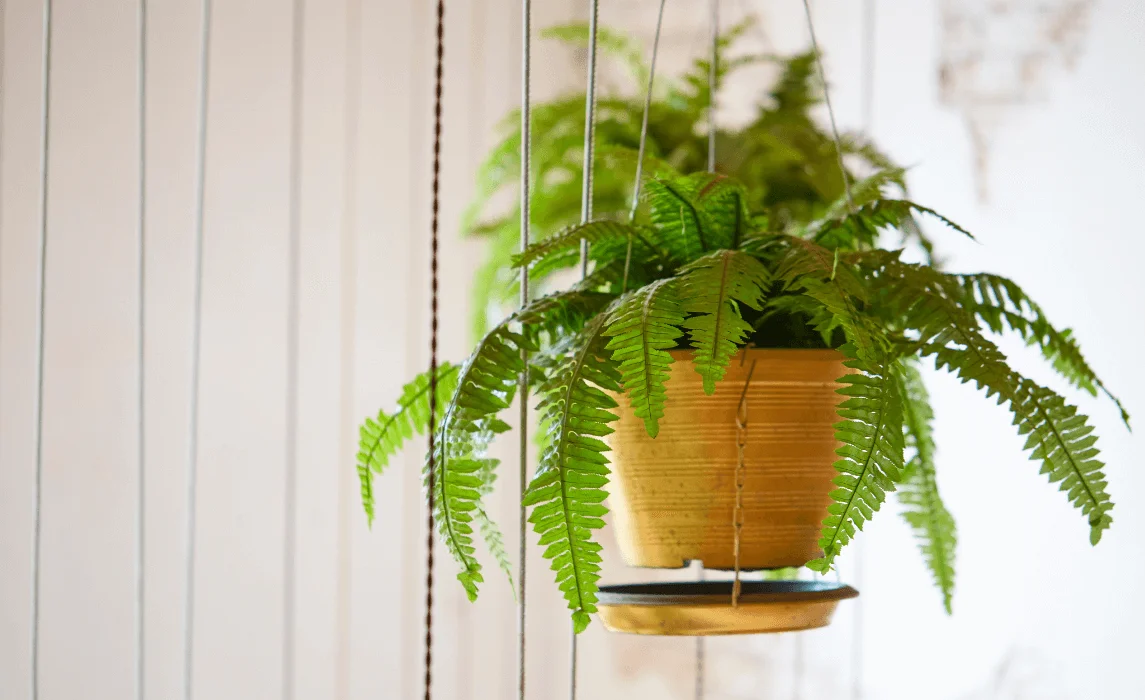
For a lush, tropical vibe, few plants rival the beauty of the Boston Fern. Known for its feathery fronds and graceful arching growth, this classic indoor hanging plant adds softness and movement to any room. Originating from humid forests, the Boston Fern thrives in moist, warm, and shaded environments, making it a perfect choice for bathrooms, kitchens, or shaded patios. Its fronds can reach up to three feet long, creating a fountain-like cascade of greenery. To keep it vibrant, the soil should remain evenly moist but never soggy, and the humidity should stay high—regular misting helps prevent leaf drop. Boston Ferns are ideal for experienced gardeners or those who love attentive care, as they appreciate a consistent environment and thrive with regular maintenance.
Soil: Peat-rich, moisture-retentive soil
Water: Keep soil moist, not wet
Light: Bright, indirect light
Humidity: High (60–80%)
Fertilizer: Monthly during growing season
Temperature: 60–75°F (15–24°C)
USDA Zone: 9–11
5. String of Hearts (Ceropegia woodii)
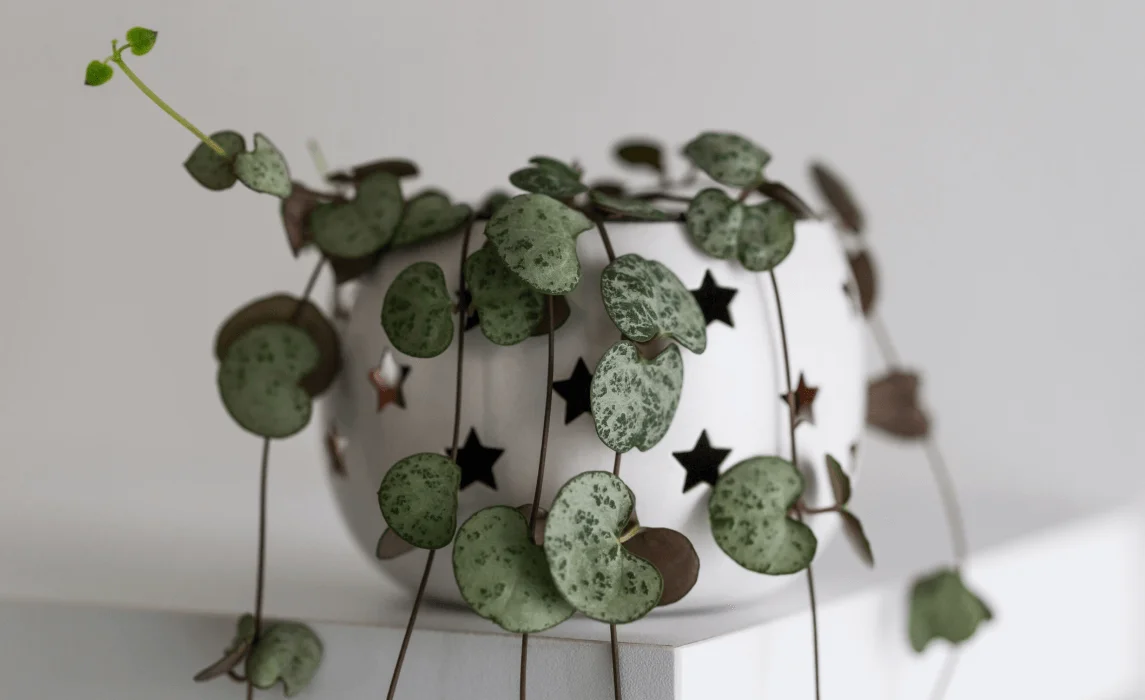
Delicate and romantic, the String of Hearts is a captivating trailing houseplant adored for its thin vines and dainty, heart-shaped leaves. Native to South Africa, this semi-succulent plant displays silver-patterned leaves with purple undersides, creating a stunning contrast that looks enchanting in hanging planters. It thrives in bright, indirect light and prefers well-draining soil that dries completely between waterings. Its vines can grow several feet long, forming a cascade of silver-green beauty that complements minimalist or bohemian interiors. Because it requires minimal maintenance and infrequent watering, it’s perfect for beginners or busy plant owners who want a unique, easy-to-grow plant that adds elegance to their space.
Soil: Cactus or succulent mix
Water: Water only when soil is dry
Light: Bright, indirect light
Humidity: Low to moderate
Fertilizer: Every 6–8 weeks during growing season
Temperature: 60–85°F (16–29°C)
USDA Zone: 10–12
6. Philodendron (Philodendron hederaceum)
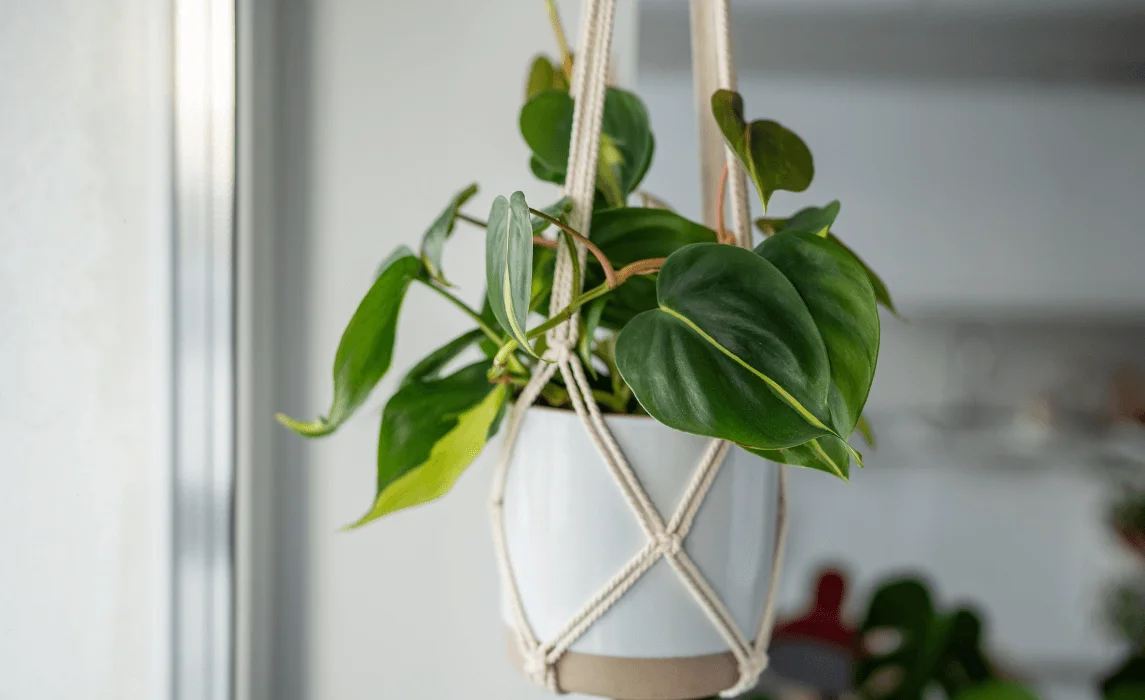
A beloved staple among indoor hanging plants, the Heartleaf Philodendron brings a touch of the tropics indoors. Native to Central and South America, this plant is known for its lush heart-shaped leaves and long, trailing vines that spill beautifully from baskets and shelves. Its deep green foliage provides a rich, vibrant contrast to any décor, and it thrives in bright, indirect light but also tolerates partial shade. Philodendrons prefer slightly moist soil and average humidity. They’re adaptable, forgiving, and thrive even with occasional neglect, making them perfect for new gardeners or anyone seeking a stress-free, low-maintenance plant. With regular pruning, it remains compact and full, while untrimmed vines create a dramatic hanging effect.
Soil: Well-draining potting mix with organic matter
Water: Water when top inch of soil feels dry
Light: Bright, indirect to medium light
Humidity: Average indoor levels
Fertilizer: Every 4 weeks during growing season
Temperature: 65–85°F (18–29°C)
USDA Zone: 10–11
7. String of Pearls (Senecio rowleyanus)

The String of Pearls is a showstopper among succulent hanging plants, instantly recognizable by its unique bead-like foliage. Originating from dry regions of Africa, it features delicate stems lined with small, spherical leaves that resemble green pearls. This plant thrives in bright light and needs minimal watering, as its plump leaves store moisture efficiently. It’s a favorite for sunny windowsills or hanging planters where its long, cascading tendrils can shine. Its whimsical appearance makes it a fantastic conversation piece for modern interiors. The String of Pearls is perfect for succulent lovers and low-maintenance gardeners who appreciate quirky plants that look stunning with little effort.
Soil: Well-draining cactus mix
Water: Allow soil to dry completely
Light: Bright, indirect to direct light
Humidity: Low
Fertilizer: Light feeding every 2 months
Temperature: 70–85°F (21–29°C)
USDA Zone: 9–12
8. Peperomia (Peperomia scandens)
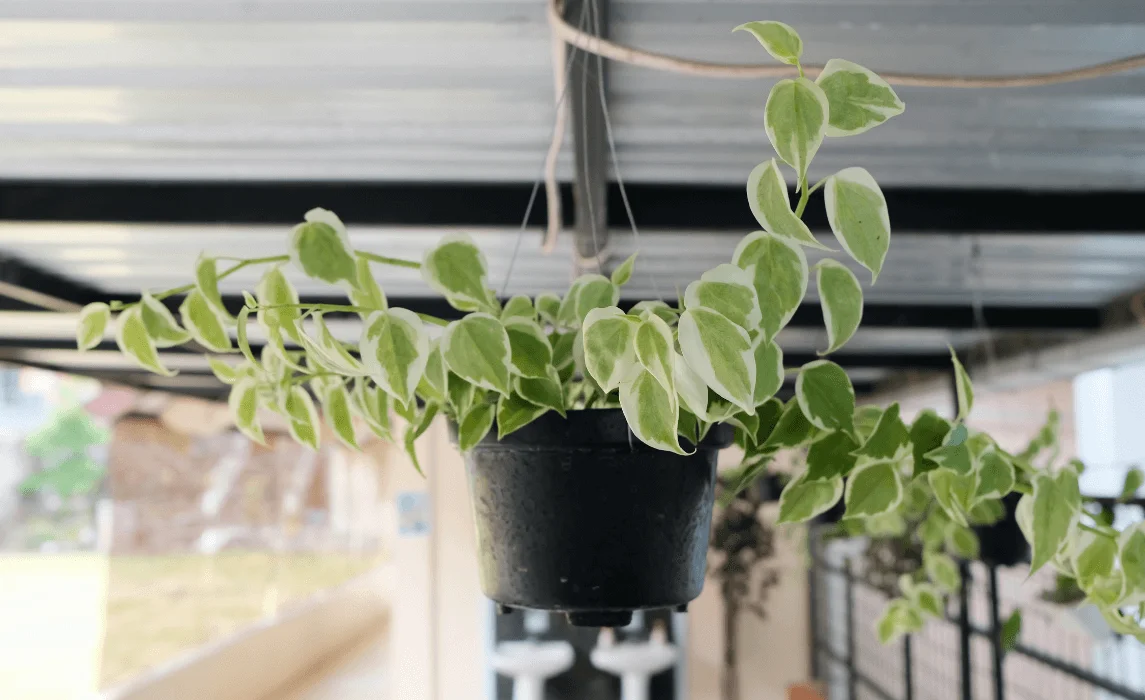
The Peperomia is a charming compact vine with a variety of leaf forms, from heart-shaped to oval, often with lovely green and silver variegation. Native to Central and South America, Peperomia is ideal for small spaces or window hangers where its glossy, succulent-like leaves can be admired up close. It prefers bright, indirect light and moderate humidity. The plant stores water in its leaves, so it’s important not to overwater. Known for being both non-toxic and easy to care for, Peperomia is excellent for beginners and pet owners alike. Its neat, trailing habit adds a touch of structured greenery without overwhelming the space, making it a versatile addition to modern and minimalist homes.
Soil: Light, well-aerated potting mix
Water: Allow topsoil to dry between waterings
Light: Bright, indirect light
Humidity: Moderate
Fertilizer: Every 4–6 weeks during growth
Temperature: 60–80°F (16–27°C)
USDA Zone: 10–12
9. Petunia (Petunia × hybrida)
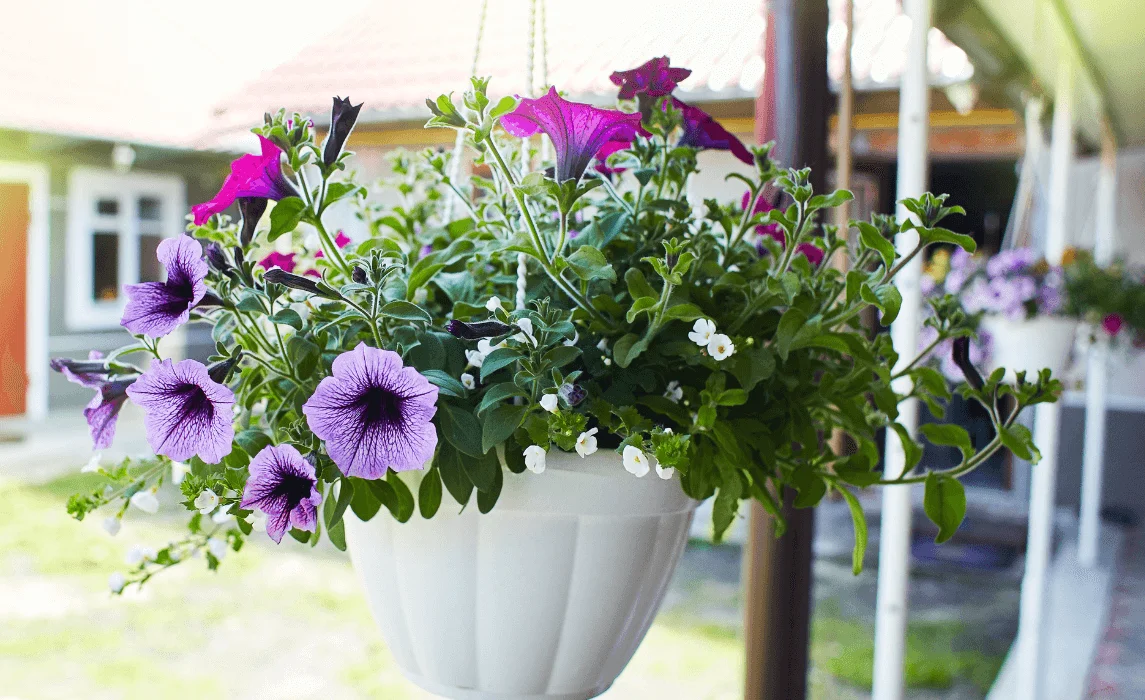
For those who love a splash of color, Petunias are among the best hanging plants for both indoor and semi-outdoor displays. These cheerful flowers, native to South America, bloom profusely in hues of pink, purple, white, and red, creating an eye-catching cascade of color. They thrive in full sunlight and bloom continuously throughout the summer with proper care. Petunias prefer nutrient-rich, well-draining soil and regular watering, especially during hot months. Their sweet fragrance and vibrant blossoms make them an excellent choice for creative gardeners who enjoy color and scent. Perfect for bright windows, patios, or sunrooms, they add instant joy and a summery touch wherever they’re placed.
Soil: Fertile, well-draining potting mix
Water: Keep soil consistently moist
Light: Full sunlight
Humidity: Moderate
Fertilizer: Every 2 weeks during flowering
Temperature: 60–75°F (15–24°C)
USDA Zone: 9–11 (annual elsewhere)
10. Burro’s Tail (Sedum morganianum)
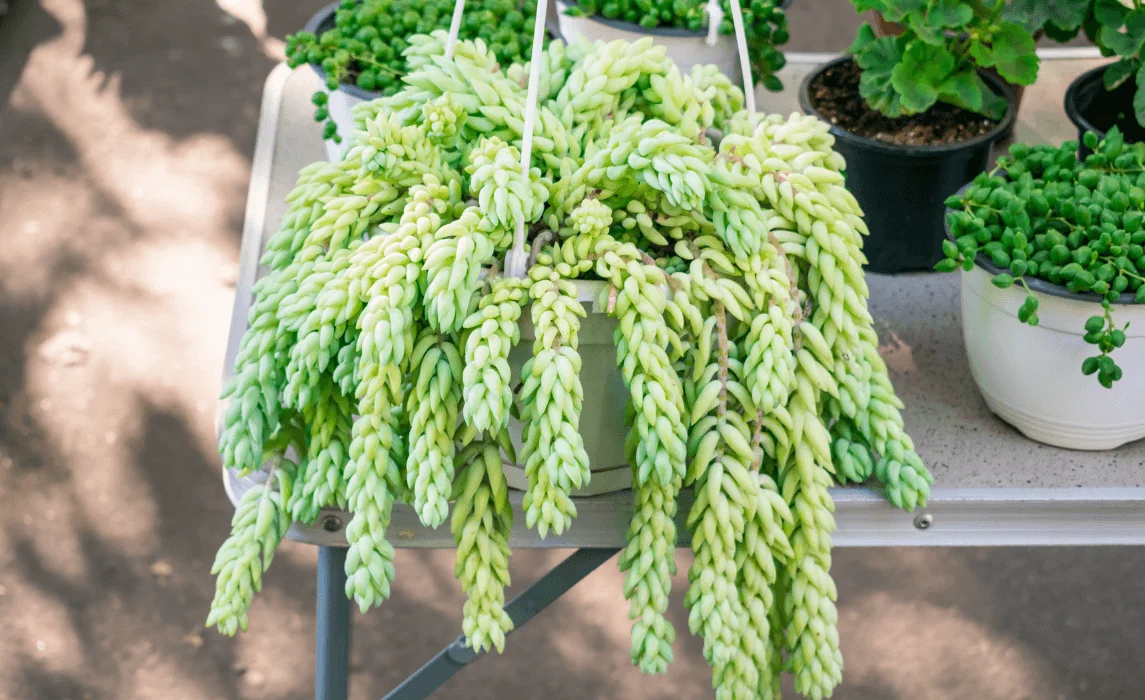
The Burro’s Tail, also known as the Donkey’s Tail, is a striking succulent hanging plant adored for its thick, cascading stems covered with fleshy, light green leaves. Native to Mexico, this plant is as resilient as it is beautiful, making it a staple for those who love low-maintenance greenery. Its trailing stems can grow over two feet long, forming a stunning drape of textured foliage perfect for macramé hangers or high shelves. It flourishes in bright, indirect sunlight and well-draining soil, needing minimal watering. Overwatering can cause the delicate leaves to drop, so restraint is key. The Burro’s Tail is best suited for experienced succulent enthusiasts or decorators who enjoy dramatic, sculptural plants that require little day-to-day attention.
Soil: Sandy, well-draining cactus mix
Water: Water sparingly, every 2–3 weeks
Light: Bright light, indirect to partial sun
Humidity: Low
Fertilizer: Light feeding twice a year
Temperature: 65–80°F (18–27°C)
USDA Zone: 9–11
Frequently Asked Questions (FAQ)
1. How often should I water my indoor hanging plants?
Most indoor hanging plants prefer to dry slightly between waterings. Water thoroughly when the top inch of soil feels dry, and ensure good drainage to avoid root rot.
2. What’s the best soil for hanging plants?
A well-draining mix is essential. For tropical plants, use a peat or coco coir blend; for succulents, add sand or perlite.
3. Can hanging plants grow in low light?
Yes — Pothos, Philodendron, and English Ivy can thrive in shaded areas, although they’ll grow more slowly.
4. How can I keep hanging plants full and healthy?
Regular pruning encourages bushier growth. Rotate your plants every few weeks so all sides receive light evenly.



.webp)


